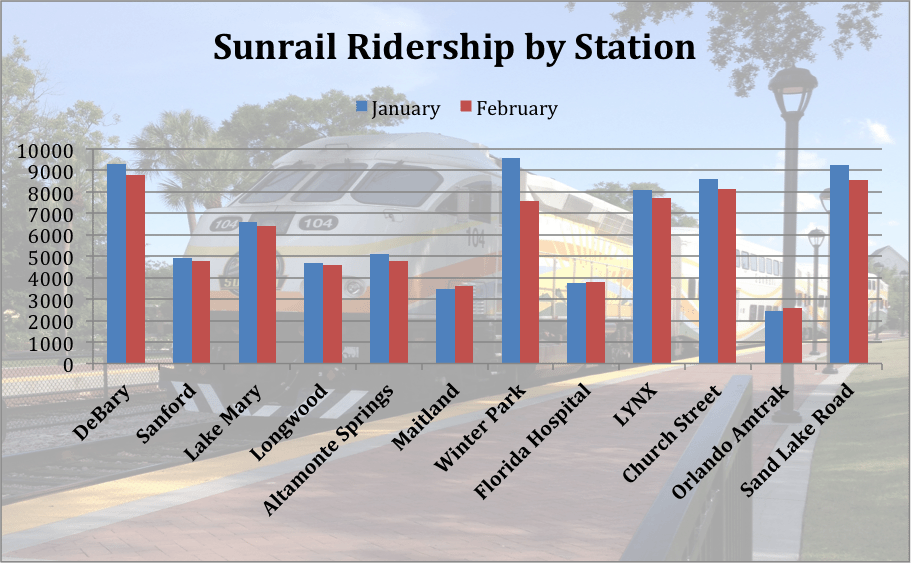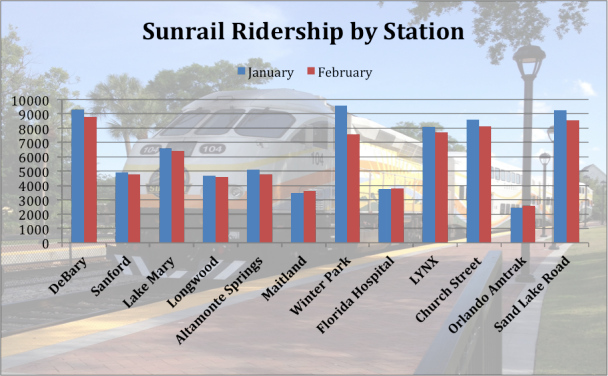This is part of a series following SunRail’s monthly ridership numbers. Trevor Conley, a senior Environmental Sciences student at Rollins College, is analyzing data for Bungalower from SunRail as it becomes available.
After posting ridership numbers topping 75,000 in January, SunRail’s ridership fell slightly to just over 71,000 for the short month of February. SunRail service was offered the same number of days during January and February, with an average of 3,789 daily riders in January compared to a minor decline of an average of 3,561 daily riders in February. The DeBary and Sand Lake Road stations, the northern and southern termini along the corridor, posted the highest boarding numbers, with 8,772 and 8,546 riders, respectively.
As of the end of February, there are 30 projects under construction or proposed within an 10-minute walk of all SunRail stations. This investment in transit-oriented development in previously under-utilized spaces reflects the national trend to meet market demand for walkable urbanism.
In preparation for the I-4 Ultimate Project, several municipalities and large employers have begun offering shuttle services to and from SunRail stops. These efforts build on the services currently available at the Lake Mary, Winter Park, and Sand Lake Road stations. It is important to note that connectivity between SunRail stations with other mass-transit options and places of employment is improving.
You can read the SunRail Feb 2015 Scorecard here.



Real Estate is really picking up along the Sunrail. Yes we agree!
Thanks for the great summary! Would also be nice to see a list of the projects proposed at each station and a dollar value.
Some bicycle lane networks connecting stations to local neighborhoods and job centers would go a long way to increase ridership.